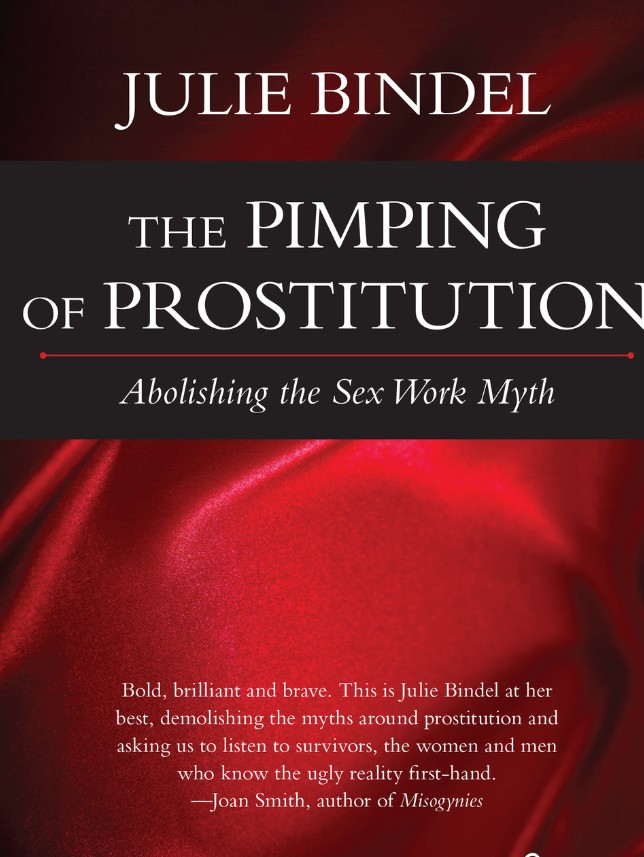Harms of Prostitution Exposed in Stats & Stories
 Media Release 30 October 2017
Media Release 30 October 2017
Family First NZ says that a new book called The Pimping of Prostitution: Abolishing the Sex Work Myth highlights the fact that many sex workers suffer horrific abuse, and these testimonies are backed up by the statistics.
“The sad reality is that the prostitution industry is harmful and dangerous despite attempts by the Prostitutes Collective to paint it as otherwise, and more and more vulnerable people are becoming victims because of the flawed decriminalisation of prostitution,” says Bob McCoskrie, National Director of Family First NZ.
“Decriminalisation has failed to achieve its stated objectives of improving the safety, health and welfare or the conditions of the workers. What it has achieved is greatly improving the conditions for pimps and brothel owners.”
The government report on prostitution after decriminalisation found that street workers experience 2 to 3 times more violence than other workers, and actual serious violence (rape, holding against will, and physical violence) are reported less than 20% of the time. (see below)
“What other business or sector of society in New Zealand would tolerate this – and yet the sex industry is sold as a success story. Where is the Occupational Safety and Health? No other work employment sector has a risk factor where rape is considered an inherent part of the work, and why would we want a family member to be in a type of work where there is a 35% chance of being sexually molested i.e forced to accept sex from a man they did not want to.”
“Prostitution is harmful to workers and communities and the association of prostitution with gang and criminal behaviour, alcohol and drug abuse, and sexual abuse and violence means that we are sentencing more and more vulnerable people to an unacceptable situation.”
Family First NZ is joining calls for a critical review of the 2003 Prostitution Reform Act, the criminalisation of the pimping and purchase of women for sexual purposes, and greater support for workers wishing to exit prostitution.
“How can we be serious about reducing sexual violence against women when the state legitimises the sexual abuse and exploitation of vulnerable people. There is a healthy stigma against prostitution – and for good reason.”
ENDS
Table 11: Adverse Experiences while Working in the Last 12 Months by Sector (PLRC 2008 report page 56)
| Total % | Street Workers % | Managed Indoor % | Private Indoor % | |
| Experienced refusal by client to pay (N=769) Reported to police Reported to another person besides police | 12.6 9.1 53.8 | 31.5 11.7 46.6 | 7.5 4.9 63.9 | 12.6 10.0 53.3 |
| Had money stolen by a client (N=768) Reported to police Reported to another person besides police | 8.3 15.5 63.1 | 24.4 10.6 64.3 | 4.2 19.3 71.7 | 7.9 18.3 53.3 |
| Been physically assaulted by client (N=770) Reported to police Reported to another person besides police | 9.8 19.2 75.9 | 13.4 19.2 64.5 | 10.4 13.5 86.4 | 7.3 32.0 53.9 |
| Threatened by someone with physical violence (N=768) Reported to police Reported to another person besides police | 15.9 20.0 70.0 | 39.5 17.8 72.2 | 9.3 14.8 77.3 | 16.3 27.0 60.1 |
| Held somewhere against their will (N=766) Reported to police Reported to another person besides police | 4.7 21.1 59.8 | 10.2 19.3 40.5 | 4.2 30.1 63.4 | 3.2 3.5 79.2 |
| Been raped by a client (N=769) Reported to police Reported to another person besides police | 3.0 32.1 65.0 | 5.3 6.0 53.8 | 3.3 35.4 71.0 | 1.5 62.3 62.3 |
| Received abusive text messages from clients (N=771) Reported to police Reported to another person besides police | 17.3 6.1 44.2 | 11.0 11.2 42.3 | 7.4 14.2 46.4 | 36.4 2.6 43.7 |






